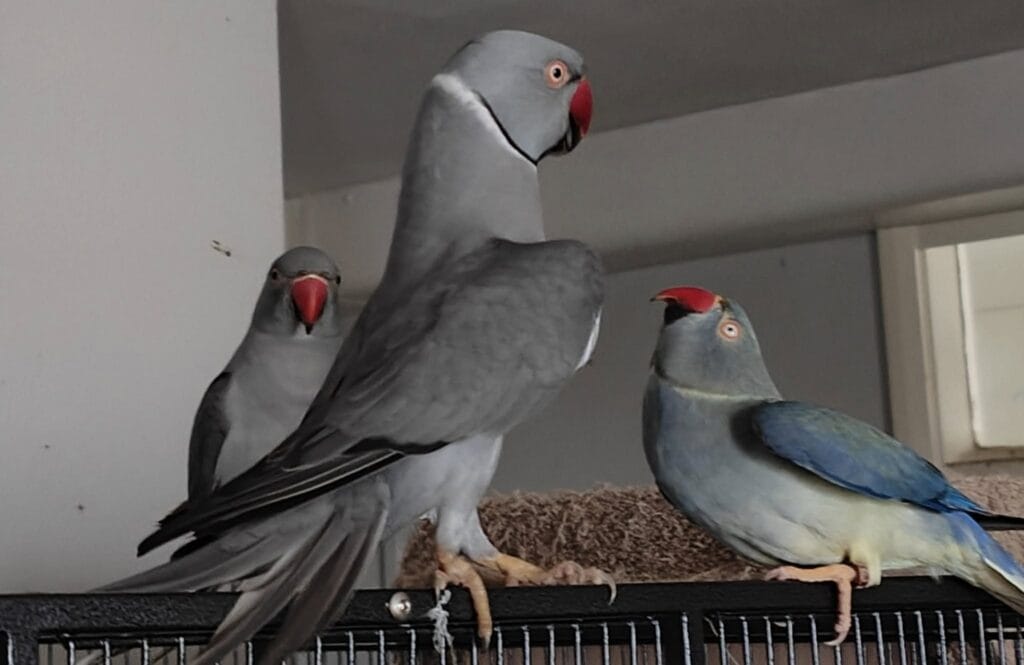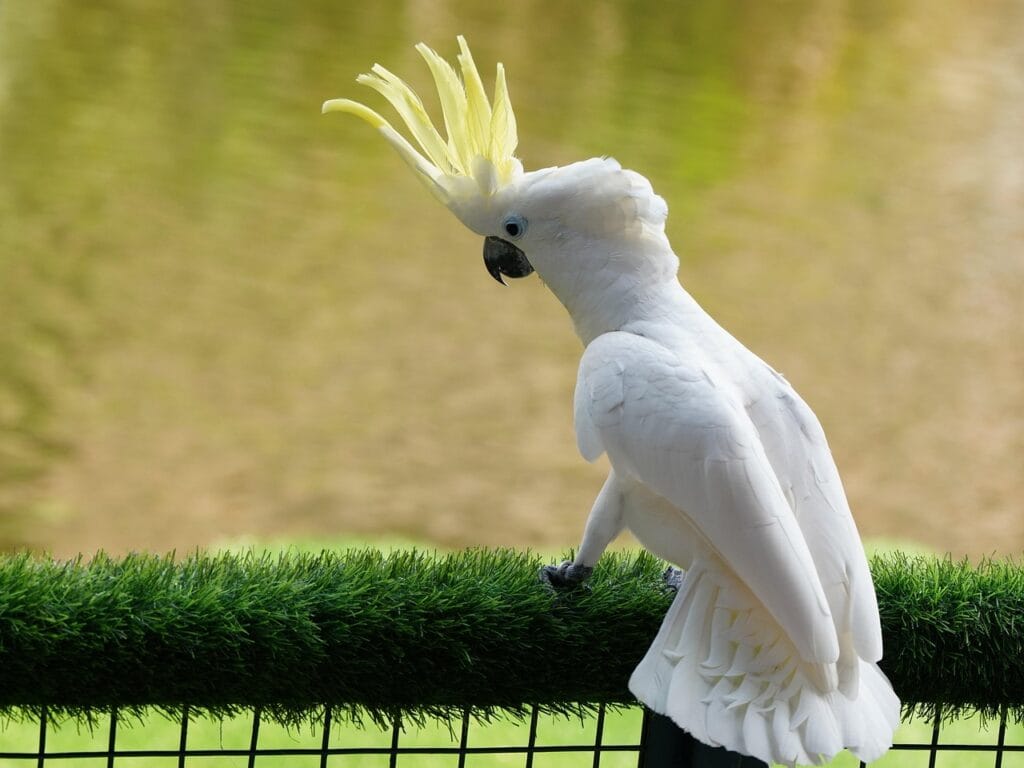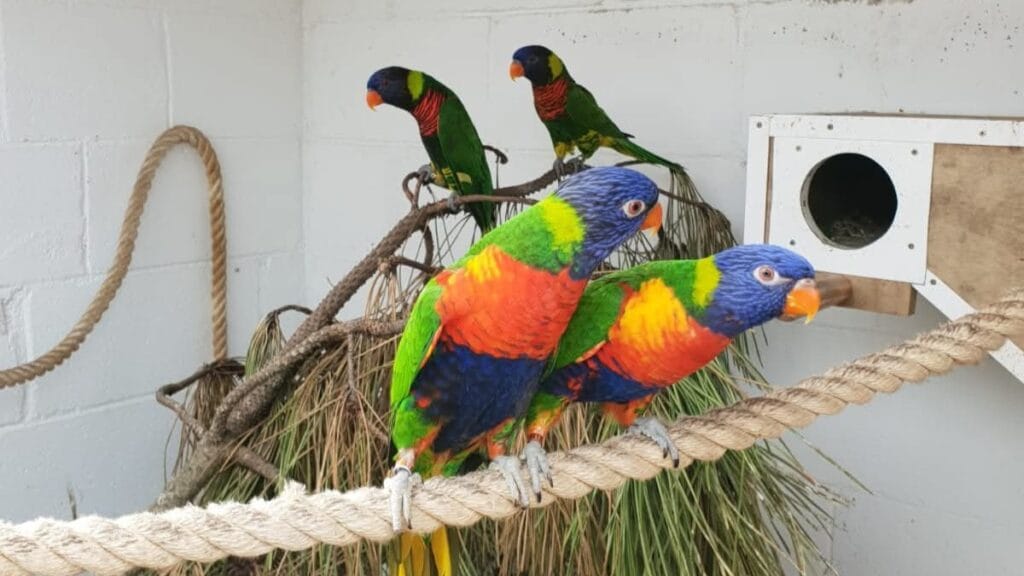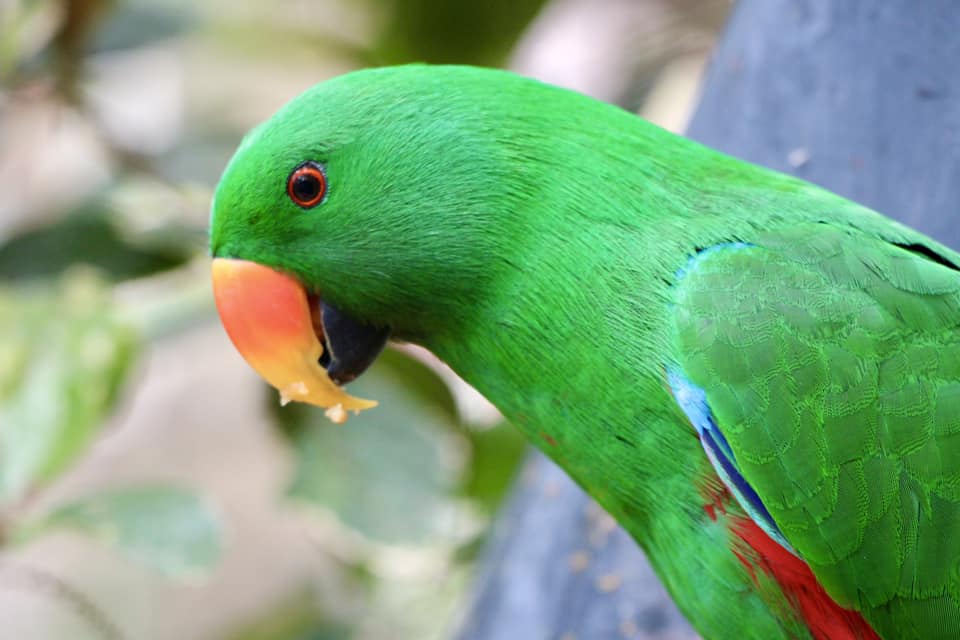Parakeet Sounds – 10 Surprising Noises You Should Never Ignore
Your parakeet’s vocalizations are far more sophisticated than simple chirping. These remarkable avian companions communicate through an intricate repertoire of parakeet sounds that convey everything from contentment to distress. Understanding these acoustic signals is crucial for responsible bird ownership, as certain vocalizations can indicate serious health concerns or behavioral issues that require immediate attention.
Most parakeet owners recognize the cheerful morning chatter and playful whistling, but numerous subtle parakeet sounds often go unnoticed or misinterpreted. These overlooked vocalizations frequently carry the most important messages about your bird’s physical and emotional well-being. By developing acoustic awareness and learning to decode these surprising noises, you’ll strengthen your bond with your feathered companion while ensuring their optimal health and happiness.
Learning to interpret parakeet sounds becomes an essential skill for any bird owner who wants to provide exceptional care. This comprehensive guide explores ten critical vocalizations that should never be ignored, helping you distinguish between normal communication and potential warning signs that require immediate attention.
Table of Contents:
Understanding the Complexity of Parakeet Vocalizations
The Physiological Mechanisms Behind Parakeet Sounds
Parakeets produce their diverse range of vocalizations through a specialized organ called the syrinx, located at the base of their trachea. Unlike human vocal cords, this bifurcated structure allows birds to create multiple tones simultaneously, resulting in the complex harmonic patterns characteristic of parakeet sounds. The syrinx’s intricate muscular control enables these intelligent birds to modulate frequency, amplitude, and timbre with remarkable precision.
The respiratory system plays an equally vital role in vocalization production. Parakeets utilize air sacs connected to their lungs to create the airflow necessary for sound generation. When these physiological systems function properly, parakeet sounds remain clear, melodious, and varied. However, respiratory infections, syringeal disorders, or other health complications can dramatically alter vocal quality and patterns.
This complex vocal apparatus allows parakeets to produce over 40 distinct types of calls, each serving specific communication purposes. From contact calls that maintain flock cohesion to alarm calls that warn of danger, every vocalization carries meaning. Understanding this sophisticated communication system helps owners recognize when normal parakeet sounds shift into concerning territory.
Environmental Factors Influencing Parakeet Sounds
Your parakeet’s acoustic environment significantly impacts their vocalization patterns and frequency. These social creatures naturally adapt their parakeet sounds to match their surroundings, often mimicking household noises, other pets, or human speech patterns. Changes in lighting, temperature, humidity, and social dynamics can trigger unusual vocalizations that may initially seem concerning but represent normal adaptive responses.
Seasonal variations also influence parakeet sounds, particularly during breeding periods when hormonal fluctuations intensify vocal activity. Understanding these natural cycles helps distinguish between normal behavioral changes and potential health concerns requiring veterinary intervention.
The time of day dramatically affects parakeet vocalizations, with most birds exhibiting peak vocal activity during dawn and dusk hours. This natural rhythm, called crepuscular behavior, reflects their wild ancestors’ communication patterns. Disruptions to this normal schedule often indicate stress, illness, or environmental problems that need addressing.

The 10 Surprising Parakeet Sounds You Should Never Ignore
1. Labored Breathing Sounds: The Silent Alarm
Respiratory distress manifests through subtle changes in normal parakeet sounds, often beginning with barely audible wheezing or clicking noises during breathing. These concerning vocalizations typically accompany tail bobbing, open-mouth breathing, or prolonged periods of silence. Respiratory infections, air sac mites, or environmental toxins can trigger these dangerous symptoms.
Early intervention is critical when detecting respiratory-related parakeet sounds. Delaying veterinary care can result in rapid deterioration, as birds often mask illness symptoms until conditions become severe. Any unusual breathing sounds warrant immediate professional evaluation, regardless of how minor they initially appear.
The most common respiratory sounds include wet clicking, dry crackling, and labored wheezing. These noises often become more pronounced during physical activity or stress. Unlike mammals, birds cannot breathe through their mouths effectively, making any respiratory compromise immediately life-threatening.
2. Grinding and Clicking: Digestive Distress Indicators
Parakeets occasionally produce mechanical grinding or clicking sounds unrelated to normal beak maintenance behaviors. These concerning parakeet sounds often indicate digestive complications, including crop stasis, gastrointestinal blockages, or bacterial infections affecting the digestive system. The grinding typically occurs rhythmically and may accompany regurgitation attempts or loss of appetite.
Distinguishing between normal beak grinding during relaxation and pathological digestive sounds requires careful observation of accompanying behaviors. Healthy beak grinding occurs primarily before sleep and sounds smooth and rhythmic, while distress-related grinding appears irregular and forced.
Normal beak grinding produces a soft, consistent sound that parakeets make when content and preparing to rest. However, concerning grinding sounds are often louder, more erratic, and accompanied by visible discomfort. These vocalizations may indicate everything from intestinal parasites to foreign object ingestion.
3. High-Pitched Screaming: Pain and Fear Responses
Sudden, piercing screams represent one of the most alarming parakeet sounds that demands immediate attention. These vocalizations typically indicate acute pain, extreme fear, or territorial aggression. Night frights, predator anxiety, or physical injuries commonly trigger these intense vocal responses.
Chronic screaming behaviors may develop from inadequate environmental enrichment, social isolation, or learned attention-seeking behaviors. However, sudden onset screaming accompanied by physical symptoms like feather plucking, aggression, or lethargy suggests underlying medical conditions requiring professional diagnosis.
Pain-induced screaming differs significantly from normal vocalizations in intensity, duration, and context. These sounds often occur spontaneously without apparent triggers and may be accompanied by visible signs of distress such as panting, trembling, or abnormal posturing.
4. Repetitive Alarm Calls: Stress and Territory Warning
Parakeets emit distinctive alarm calls consisting of sharp, repetitive notes that differ significantly from their normal conversational chatter. These urgent parakeet sounds serve as warnings about perceived threats or territorial boundary violations. Continuous alarm calling without apparent external triggers may indicate chronic stress, hormonal imbalances, or neurological complications.
Understanding your bird’s normal alarm call patterns helps identify when these vocalizations become excessive or inappropriate. Persistent alarm calling during previously comfortable situations suggests environmental changes or internal distress requiring investigation.
Alarm calls typically feature rapid-fire sequences of harsh, staccato notes that carry far distances. While normal in response to genuine threats, chronic alarm calling can indicate psychological disorders, hormonal imbalances, or medical conditions affecting the nervous system.

5. Unusual Silence: The Absence That Speaks Volumes
While not technically a sound, prolonged silence represents one of the most concerning changes in normal parakeet sounds patterns. These naturally vocal birds rarely remain quiet for extended periods unless experiencing illness, depression, or severe stress. Sudden cessation of normal vocalizations often precedes more obvious symptoms of health deterioration.
Monitoring your parakeet’s typical vocal schedule helps identify concerning periods of silence. Birds that normally greet mornings with enthusiastic chatter but remain quiet may be experiencing the early stages of illness or psychological distress requiring immediate attention.
Normal parakeets produce sounds throughout most of their waking hours, even if just soft contact calls or content murmuring. Complete silence, especially during typically active periods, often indicates serious problems. This behavioral change frequently occurs before physical symptoms become apparent.
6. Regurgitation Sounds: Affection Versus Illness
Regurgitation represents normal parakeet behavior when directed toward bonded companions or favored objects, producing distinctive pumping sounds and head movements. However, chronic regurgitation or regurgitation without clear social triggers may indicate hormonal imbalances, reproductive disorders, or gastrointestinal problems.
These complex parakeet sounds require careful interpretation based on context, frequency, and accompanying behaviors. Occasional regurgitation toward trusted humans demonstrates affection, while persistent regurgitation accompanied by weight loss or lethargy suggests medical complications.
The sounds associated with regurgitation include rhythmic pumping noises, soft clicking, and occasional wet sounds as food moves up the digestive tract. Normal regurgitation occurs infrequently and is directed toward specific targets, while pathological regurgitation may happen repeatedly without clear purpose.
7. Grinding Teeth Sounds: Neurological Warning Signs
Unusual grinding or chattering sounds produced by rapid beak movements may indicate neurological complications or heavy metal poisoning. These concerning parakeet sounds differ from normal beak maintenance activities and often accompany coordination problems, head tilting, or seizure-like behaviors.
Neurological symptoms in parakeets can progress rapidly, making early recognition and intervention crucial for successful treatment outcomes. Any unexplained changes in beak movement patterns or associated grinding sounds warrant emergency veterinary evaluation.
Neurological grinding sounds often have a mechanical quality and may occur at inappropriate times, such as during feeding or social interaction. These vocalizations frequently accompany other neurological symptoms like tremors, balance problems, or abnormal head movements.
8. Whimpering or Soft Crying: Emotional Distress Signals
Parakeets occasionally produce soft, whimpering sounds that resemble crying or whining when experiencing emotional distress or physical discomfort. These subtle parakeet sounds often accompany behavioral changes like increased sleeping, reduced appetite, or social withdrawal.
Emotional distress in parakeets can result from environmental changes, loss of companions, or chronic stress conditions. Recognizing these quiet distress signals enables early intervention to address underlying causes and prevent more serious behavioral or health complications.
These soft vocalizations differ from normal contact calls in their plaintive quality and context. They often occur when birds feel isolated, anxious, or uncomfortable, serving as subtle requests for attention or comfort from their human companions.
9. Rattling Chest Sounds: Serious Respiratory Concerns
Deep rattling or crackling sounds emanating from the chest area represent serious respiratory complications requiring emergency veterinary care. These alarming parakeet sounds indicate fluid accumulation, severe infections, or advanced respiratory disease that can quickly become life-threatening without immediate treatment.
Respiratory emergencies in birds progress rapidly due to their efficient but delicate respiratory systems. Any rattling chest sounds, especially when accompanied by labored breathing or weakness, constitute veterinary emergencies requiring immediate professional intervention.
These sounds often indicate fluid in the air sacs or lower respiratory tract, a condition that can rapidly progress to respiratory failure. The rattling typically becomes more pronounced with activity and may be accompanied by visible breathing difficulties.
10. Mechanical or Electronic Sounds: Behavioral Abnormalities
Parakeets occasionally develop unusual vocalizations mimicking mechanical or electronic devices, which may indicate obsessive-compulsive behaviors or neurological abnormalities. While mimicry represents normal parakeet behavior, excessive repetition of non-natural sounds can suggest psychological distress or cognitive dysfunction.
These peculiar parakeet sounds often develop gradually and may initially seem amusing or impressive. However, when mechanical mimicry replaces normal vocalizations or becomes compulsive, it may indicate underlying behavioral or neurological problems requiring professional evaluation.

Interpreting Context: When Normal Sounds Become Concerning
Frequency and Duration Considerations
The frequency and duration of parakeet sounds provide crucial diagnostic information for identifying potential problems. Normal vocalizations occur at predictable intervals throughout the day, while concerning sounds may appear suddenly, persist longer than usual, or occur at inappropriate times.
Monitoring changes in your bird’s typical vocal patterns helps establish baseline behaviors and identify deviations that warrant attention. Birds that suddenly become much more or less vocal than usual often indicate underlying health or behavioral issues requiring investigation.
Accompanying Physical Symptoms
Parakeet sounds rarely occur in isolation when indicating health problems. These vocalizations typically accompany physical symptoms such as changes in posture, appetite, activity level, or bathroom habits. Recognizing these combined symptom patterns helps prioritize urgent cases requiring immediate veterinary care.
The combination of unusual sounds with physical symptoms often provides clearer diagnostic information than either observation alone. This comprehensive approach to symptom recognition helps bird owners make informed decisions about when to seek professional help.
Environmental Factors That Influence Parakeet Sounds
Household Noise and Stress Triggers
Common household noises can significantly impact parakeet vocalizations, either triggering abnormal sounds or masking concerning ones. Understanding these environmental influences helps owners create optimal acoustic environments while recognizing when unusual sounds indicate genuine problems rather than environmental responses.
Sudden changes in household routines, new pets, construction noise, or altered lighting schedules can all trigger changes in normal parakeet sounds. Identifying and addressing these environmental stressors often resolves concerning vocalizations without medical intervention.
Social Dynamics and Flock Behavior
Parakeets are highly social creatures whose vocalizations reflect their position within household social hierarchies. Changes in family dynamics, introduction of new pets, or alterations in daily interaction patterns can significantly influence parakeet sounds and overall vocal behavior.
Understanding your bird’s social needs and communication patterns helps distinguish between attention-seeking behaviors and genuine distress signals. This knowledge enables owners to provide appropriate responses that strengthen human-bird bonds while addressing legitimate concerns.
Creating a Vocal Health Monitoring System
Daily Observation Techniques
Establishing consistent daily observation routines helps owners become familiar with their parakeet’s normal vocal patterns and quickly identify concerning changes. This systematic approach to monitoring parakeet sounds enhances early problem detection and improves treatment outcomes.
Effective monitoring involves noting the timing, duration, context, and quality of various vocalizations throughout the day. Keeping simple records of unusual sounds or behavioral changes provides valuable information for veterinary consultations when problems arise.
Recording and Documentation Strategies
Modern technology enables owners to record unusual parakeet sounds for professional evaluation when immediate veterinary access isn’t available. These recordings provide valuable diagnostic information and help veterinarians assess situations remotely when necessary.
Documenting vocal changes alongside other behavioral observations creates comprehensive health records that assist veterinary professionals in making accurate diagnoses and treatment recommendations. This proactive approach often leads to better outcomes and reduced treatment costs.
Professional Veterinary Consultation Guidelines
When to Seek Immediate Emergency Care
Certain parakeet sounds require immediate veterinary attention regardless of the time of day or other circumstances. Understanding which vocalizations constitute true emergencies can mean the difference between successful treatment and tragic outcomes.
Emergency situations include any respiratory distress sounds, sudden onset screaming with physical symptoms, complete cessation of normal vocalizations, or any sounds accompanied by visible breathing difficulties. These conditions require immediate professional intervention to prevent serious complications or death.
Preparing for Veterinary Visits
Effective communication with veterinary professionals requires thorough preparation and clear documentation of concerning parakeet sounds and associated symptoms. This preparation helps ensure accurate diagnoses and appropriate treatment recommendations.
Bringing recordings of unusual sounds, written observations of behavioral changes, and detailed histories of recent environmental changes helps veterinarians make informed decisions about diagnostic testing and treatment options. This collaborative approach often leads to better outcomes and more cost-effective care.
Preventive Care and Environmental Management
Creating Acoustically Healthy Environments
Designing living spaces that promote healthy parakeet sounds involves balancing stimulation with tranquility. These environments should provide appropriate noise levels, adequate social interaction opportunities, and minimal stress triggers that could lead to abnormal vocalizations.
Optimal acoustic environments include areas for quiet rest, spaces for active vocalization, and appropriate sound levels that don’t overwhelm sensitive avian hearing. Understanding these environmental needs helps prevent many behavioral and stress-related vocal problems.
Routine Health Maintenance
Regular veterinary checkups, proper nutrition, and appropriate environmental management help maintain healthy parakeet sounds throughout your bird’s life. These preventive measures often prevent serious vocal and health problems from developing.
Consistent care routines, including regular cage cleaning, proper diet management, and adequate exercise opportunities, support overall health and maintain normal vocal patterns. This proactive approach reduces the likelihood of developing concerning parakeet sounds related to preventable health issues.
Conclusion: Mastering the Art of Parakeet Sound Interpretation
Understanding parakeet sounds is one of the most valuable skills any bird owner can develop. These ten surprising vocalizations we’ve explored represent critical communication signals that can mean the difference between early intervention and serious health complications. By learning to interpret these subtle acoustic cues, you transform from a casual pet owner into a true avian companion who can respond appropriately to your feathered friend’s needs.
The complexity of parakeet sounds reflects the intelligence and emotional depth of these remarkable birds. From the alarming respiratory distress signals to the concerning silence that speaks volumes, each vocalization carries important information about your bird’s physical and emotional well-being. Remember that changes in normal parakeet sounds often precede visible symptoms, making your acoustic awareness a powerful tool for preventive care.
Creating an environment that promotes healthy parakeet sounds while remaining vigilant for warning signs ensures your bird enjoys optimal quality of life. Regular monitoring, proper documentation, and prompt veterinary consultation when concerning vocalizations arise demonstrate responsible bird ownership that prioritizes your companion’s health and happiness.
Your parakeet’s voice is their primary means of communication with you. By developing expertise in interpreting parakeet sounds, you strengthen the bond between you and your feathered companion while providing the exceptional care they deserve. Listen carefully, observe closely, and never hesitate to seek professional help when unusual parakeet sounds suggest your bird needs immediate attention.
The journey of understanding parakeet sounds is ongoing, but the rewards—a healthier, happier bird and a deeper connection with your avian companion—make every effort worthwhile. Start listening more intently today, and discover the rich world of communication your parakeet has been sharing with you all along.
FAQ
Should I be worried if my parakeet suddenly becomes much quieter than usual?
Yes, sudden silence in normally vocal parakeets often indicates illness or stress. Birds typically become quiet when they don’t feel well, so any dramatic decrease in normal vocalizations warrants veterinary evaluation within 24 hours.
How can I tell if my parakeet’s sounds are normal or concerning?
Normal parakeet sounds are varied, occur at predictable times, and accompany healthy behaviors like eating and playing. Concerning sounds are sudden changes from normal patterns, occur with physical symptoms, or represent completely new vocalizations your bird has never made before.
What’s the difference between normal beak grinding and concerning grinding sounds?
Normal beak grinding is soft, rhythmic, and occurs when birds are relaxed or preparing to sleep. Concerning grinding is louder, irregular, occurs at inappropriate times, and may be accompanied by other symptoms like reduced appetite or lethargy.
How quickly should I seek veterinary care for unusual parakeet sounds?
Any respiratory sounds, sudden screaming with physical symptoms, or complete cessation of normal vocalizations require immediate emergency care. Other concerning sounds should be evaluated within 24-48 hours, as birds can deteriorate rapidly when ill.
Did you enjoy this article?
Help other pet lovers benefit too — Share it on social media! 🐾💚


Leave a Reply